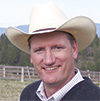
There are a large number of producers that lease pasture as part of their summer grazing program. In fact, some operations rely entirely on leased pastures.

Their success depends greatly on the availability of leased pastures each year. Therefore, developing a well-thought-out lease agreement is important for not only the producer but also the landowner.
Don’t feel bad. There are probably more people without a written lease agreement than those that have one.
However, it is recommended that the landowner and the renter establish a written lease agreed upon by both parties. This helps to eliminate problems in the future.
Dr. Larry Langemeier of Kansas State University published a paper titled “Pasture Rental Arrangements for Your Farm.” In his publication, Langemeier indicated that the following information should be included in a lease agreement:
Advertisement1. Names – List the owner of the land and the owner of the livestock, as well as their spouses.
2. Property description – Include the legal and common descriptions of the property
3. General terms – There are several terms of the lease that will need to be discussed and agreed upon, including:
There should also be some provision for forage utilization. This information will prevent overgrazing resulting in reduced forage production, and will help maintain cattle productivity.
In most agreements, violation of this provision results in the termination of the lease.
4. Operation and maintenance – In this section of the lease agreement, the landowner and tenant need to come to an agreement on who will take care of a number of operation and maintenance items during the year including:
There should also be an agreement to have all cattle branded or ear-tagged so that ownership can be established. Also, the tenant should not pasture cattle that continually push on the fences and break through frequently.
Of course the biggest issue that the landowner and the tenant need to discuss and come to an agreement on is the rental fee for the use of the pasture.
Determining a fair pasture rental rate is hard to do. There are many factors that have to be considered such as stocking rate, pasture location, water availability, forage quality, landowner ownership costs, livestock owner costs, historical rates, supply and demand – and much more.
Producers with access to the Internet can conduct a search and locate information on pasture rental rates. There are worksheets and other tools available. Oregon State University, North Dakota State University, Ohio State University and others have some valuable information online.
There are three main options available in regards to rental charges:
We have steers that gain two pounds per day on the pasture. We graze them for 100 days and they put on 200 pounds each. The rental rate would be $0.40 x 200 = $80 per head.
With this option, payments are normally made following the grazing season when the cattle are weighed off the pasture. The agreement should establish weighing conditions on and off the pasture.
Renting pastures is a common management practice for many cattle producers. Developing written pasture lease agreements is good business. It provides guidance and protection for both landowners and producers wanting to rent pastures.
Good luck with your spring turnout activities and pasture lease arrangements this season. Most of all, smile! The winter feeding season has come to an end.
References omitted due to space but available upon request. Click here to email an editor.
PHOTO
Along with established stocking rates and operations facilities, a pasture agreement should specify who will inspect fencing and repair it. Photo by Progressive Cattleman staff.